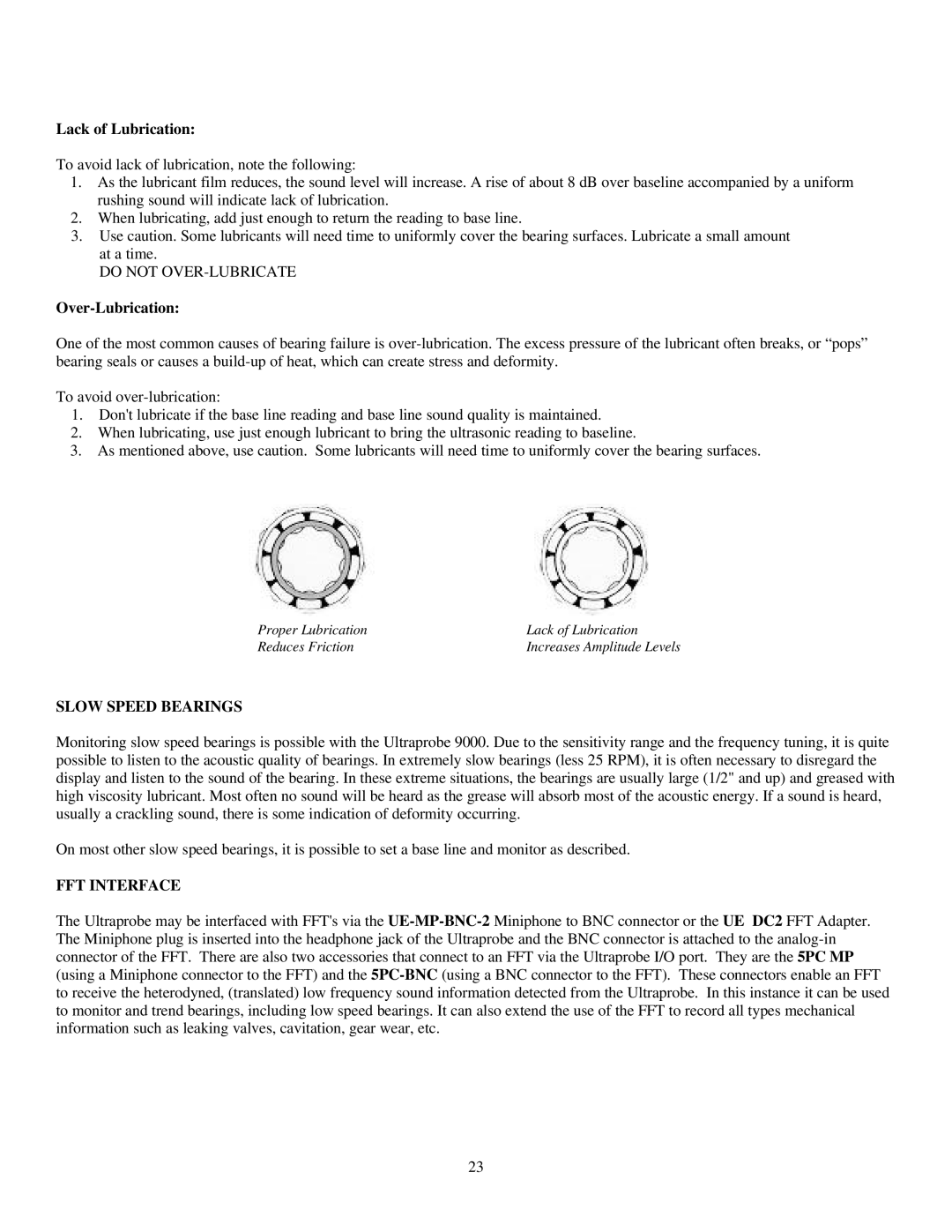
Lack of Lubrication:
To avoid lack of lubrication, note the following:
1.As the lubricant film reduces, the sound level will increase. A rise of about 8 dB over baseline accompanied by a uniform rushing sound will indicate lack of lubrication.
2.When lubricating, add just enough to return the reading to base line.
3.Use caution. Some lubricants will need time to uniformly cover the bearing surfaces. Lubricate a small amount at a time.
DO NOT OVER-LUBRICATE
Over-Lubrication:
One of the most common causes of bearing failure is
To avoid
1.Don't lubricate if the base line reading and base line sound quality is maintained.
2.When lubricating, use just enough lubricant to bring the ultrasonic reading to baseline.
3.As mentioned above, use caution. Some lubricants will need time to uniformly cover the bearing surfaces.
Proper Lubrication |
| Lack of Lubrication |
Reduces Friction |
| Increases Amplitude Levels |
|
|
|
|
|
|
SLOW SPEED BEARINGS
Monitoring slow speed bearings is possible with the Ultraprobe 9000. Due to the sensitivity range and the frequency tuning, it is quite possible to listen to the acoustic quality of bearings. In extremely slow bearings (less 25 RPM), it is often necessary to disregard the display and listen to the sound of the bearing. In these extreme situations, the bearings are usually large (1/2" and up) and greased with high viscosity lubricant. Most often no sound will be heard as the grease will absorb most of the acoustic energy. If a sound is heard, usually a crackling sound, there is some indication of deformity occurring.
On most other slow speed bearings, it is possible to set a base line and monitor as described.
FFT INTERFACE
The Ultraprobe may be interfaced with FFT's via the
23
